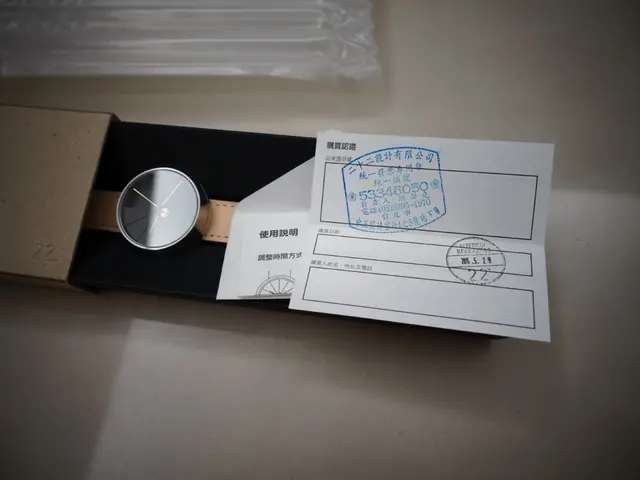Autonomous Maintenance for the Modern Plant: A Comprehensive Guide
Comprehensive Roadmap to Achieving Success through Autonomous Maintenance Operations
Dive into the realm of Autonomous Maintenance (AM) and understand how it complements the Total Productive Maintenance (TPM) philosophy! By empowering operators to assume ownership of equipment upkeep, they can tackle humdrum tasks such as cleaning, inspections, and lubrication with ease. Let's explore the cornerstones of AM, including 5S audits, abnormality management, and Centerline/CIL methodologies.
We'll take you through an actionable implementation plan to spread AM across your factory, from initial training to ongoing improvement. You'll learn about best practices, like visual management, documentation, and productive collaboration between operators and technicians. Moreover, discover how cutting-edge digital tools, like Weever, streamline AM processes, offer real-time reporting, and foster efficiencies!
Key Takeaways
- Familiarize yourself with AM's synergy within the TPM ecosystem.
- Equip operators to take charge of equipment care through routine tasks.
- Master the foundations of AM comprising 5S audits, abnormality management, and Centerline/CIL techniques.
- Follow a step-by-step rollout strategy for AM, stretching from initial training to continuous enhancement.
- Adopt best practices such as visual management, documentation, and operator-technician collaboration.
- Explore how digital tools simplify AM workflows, enable real-time reporting, and foster performance gains.
Autonomous Maintenance: An Essential Piece of the TPM Puzzle
Operators play a pivotal role in the Total Productive Maintenance (TPM) framework by embracing Autonomous Maintenance (AM) to handle routine equipment upkeep. AM bolsters operators' skillsets for performing small repairs and regular maintenance tasks without relying on technicians[1][3]. This fosters team autonomy and encourages quick responses to complications while liberating experts to focus on preventative measures and continuous improvements[1].
Implementing a Successful AM Strategy
- Operator Training: Inform operators about equipment operations and maintenance fundamentals, focusing on equipment components, detecting potential faults, and carrying out routine tasks[1].
- Equipment Deep Cleaning: Perform a complete cleaning of equipment to reveal hidden anomalies ("cleaning to inspect") and establish a standard for future upkeep[1].
- Gradual Responsibility Transfer: Slowly shift maintenance responsibilities from technicians to operators, ensuring they acquire the essential skills and knowledge[3].
- Monitoring and Feedback: Implement monitoring systems and feedback loops to ensure operators perform tasks correctly and address shortcomings promptly[3].
- Continuous Improvement: Regularly reassess and refine maintenance procedures based on performance indicators, like Overall Equipment Effectiveness (OEE)[1].
Maintaining AM Sustainability
- Cross-functional Collaboration: Encourage teamwork among operators, technicians, and management to maintain a cohesive maintenance approach[1].
- Audits and Reviews: Conduct frequent audits to appraise the effectiveness of AM and identify opportunities for advancement[2].
- Incentivization: Introduce incentives for operators to maintain high-performance levels and remain engaged in AM activities[3].
- Digital Tools and Technology: Utilize digital tools, like monitoring systems, mobile apps, and data analytics, to streamline maintenance processes, boost efficiency, and minimize human errors[3].
Best Practices
- Standardization: Adopt standardized procedures for maintenance tasks to guarantee efficiency[1].
- Documentation: Record details of maintenance tasks to track development and recognize patterns of equipment malfunctions[2].
- Recognition and Reward: Recognize and recognize operators for their AM contributions to preserve motivation and involvement[3].
- Continuous Learning: Foster ongoing learning and professional development to keep operators current with the latest techniques and technologies[2].
Digital Tools for AM
- Computerized Maintenance Management System (CMMS): Utilize CMMS to track maintenance activities, manage schedules, and analyze performance data[3].
- Mobile Apps: Implement mobile apps for operators to report issues, access maintenance guidelines, and monitor progress[3].
- Predictive Maintenance Software: Employ predictive analytics to foresee equipment failures and schedule proactive maintenance[1].
- Monitoring Systems: Integrate monitoring systems to offer real-time data on equipment performance, enabling prompt intervention and minimizing downtime[3].
- In the realm of digital tools, discover how computerized maintenance management systems (CMMS) enable efficient tracking of maintenance activities, management of schedules, and analysis of performance data, thereby bolstering the Autonomous Maintenance (AM) strategy in the business and finance industry.
- To maintain sustainability in the technology-driven world, utilize predictive maintenance software to foresee equipment failures and schedule proactive maintenance, which complements the Total Productive Maintenance (TPM) philosophy by promoting preventative measures and continuous improvements within the industry.




